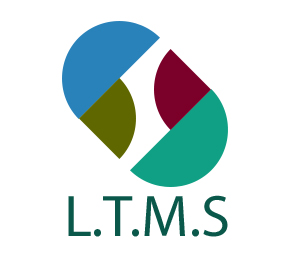What is Goitre? A goitre, or goiter, is a swelling in the neck resulting from an enlarged thyroid gland. A goitre can be associated with a thyroid that is not mal-functioning. Thyroid is a gland found in your neck just below your Adam’s apple. It secretes hormones that help regulate bodily functions, including metabolism, the process that turns food into energy. It also regulates heart rate, respiration, digestion, and mood.
Types of Goitre
A goitre may be classified based on growth pattern (nodular or diffuse) or the size (Class I -III).
Growth pattern: Nodular goitres are either of one nodule (uninodular) or of multiple nodules (multinodular).
- Uninodular goitre: One thyroid nodule; can be either inactive, or active (toxic) – autonomously producing thyroid hormone.
Multinodular goitre: Multiple nodules; can likewise be inactive or toxic, the latter is called toxic multinodular goitre and associated with hyperthyroidism. These nodules grow up at varying rates and secrete thyroid hormone autonomously, thereby suppressing TSH-dependent growth and function in the rest of gland. Inactive nodules in the same goitre can be malignant.
- Diffuse Goitre: The whole thyroid appearing to be enlarged due to hyperplasia.
Based on size
- Class I: The goitre in normal posture of the head cannot be seen; it is only found by palpation.
- Class II: The goitre is palpable and can be easily seen.
- Class III: The goitre is very large and is retrosternal (partially or totally lying below the sternum), pressure results in compression marks.


Signs and symptoms
The symptom is more of palpable or visible enlargement of the thyroid gland at the base of the neck. The condition can either be hypothyroidism (reduction in metabolism) or hyperthyroidism (excessive metabolic rate). Whatever of the condition, it may be present with the following underlying disorder. For hyperthyroidism, the most common symptoms are associated with adrenergic stimulation:
- Swelling in the neck
- A tight feeling in the throat
- Coughing
- Difficulty swallowing
- Difficulty breathing or noisy breathing
- Tachycardia (increased heart rate)
- visible palpitations
- Nervousness
- Visible tremor
- Increased blood pressure and
- Heat intolerance
Clinical manifestations are often related to
- Hypermetabolism, (increased metabolism),
- Excessive thyroid hormone,
- An increase in oxygen consumption,
- Metabolic changes in protein metabolism,
- Immunologic stimulation of diffuse goitre, and
- Ocular changes (exophthalmos).
Hypothyroid patients may have
- Weight gain despite poor appetite
- Cold intolerance
- Constipation and lethargy


Causes of Goitre
The leading cause of goitre is the deficiency in iodine, meanwhile, other condition makes an individual more prone to the disease. The iodine deficiency is common in part of the country where they are not good use of iodized table salt,
Summarily, the enlargement of the thyroid gland arising from goitre can be brought on by the following conditions:
- Iodine deficiency: Iodine is essential to helping your thyroid produce thyroid hormones. When you don’t have enough iodine, the thyroid works extra hard to make thyroid hormone, causing the gland to grow larger.
- Graves’ disease: Occurs when your thyroid produces more thyroid hormone than normal, which is known as hyperthyroidism
- Hashimoto’s disease: It predisposes thyroid to not being able to produce enough thyroid hormone, causing hypothyroidism.
- Solitary thyroid nodule
- Thyroid cancer
- Pregnancy: Being pregnant can sometimes cause the thyroid to become larger.
Risk factors
Goiters can affect anyone. They may be present at birth and occur at any time throughout life. Some common risk factors for goiters include:
- A lack of dietary iodine: People living in areas where iodine is in short supply and who don’t have access to iodine supplements are at high risk of goiters.
- Being female: Because women are more prone to thyroid disorders, they’re also more likely to develop goiters.
- Your age: Goiters are more common after age 40.
- Medical history: A personal or family history of the autoimmune disease increases your risk.
- Pregnancy and menopause: For reasons that aren’t entirely clear, thyroid problems are more likely to occur during pregnancy and menopause.
- Certain medications: Some medical treatments, including the heart drug amiodarone (Pacerone, others) and the psychiatric drug lithium (Lithodid, others), increase your risk.
- Radiation exposure: Your risk increases if you’ve had radiation treatments to your neck or chest area or you’ve been exposed to radiation in a nuclear facility, test or accident.


Possible Goitre’s treatment
The treatment involves checking the production of thyroxine from the thyroid gland, the following can be done when treating goitre
- Medications such as corticosteroids to reduce inflammation, most especially if you have thyroiditis
- Surgeries: Surgical removal of your thyroid, known as thyroidectomy, is an option if yours grows too large or doesn’t respond to medication therapy.
- Radioactive iodine: In people with toxic multinodular goiters, radioactive iodine (RAI) may be necessary. The RAI is ingested orally, and then travels to your thyroid through your blood, where it destroys the overactive thyroid tissue.
- Home care: Depending on your type of goiter, you may need to increase or decrease your iodine intake at home.
Above all, we are your health partner who seek the best for you and your family, therefore, if the development around the neck region is unusual and getting you worried, our service is 24/7 available for your wellbeing.


Recent Comments